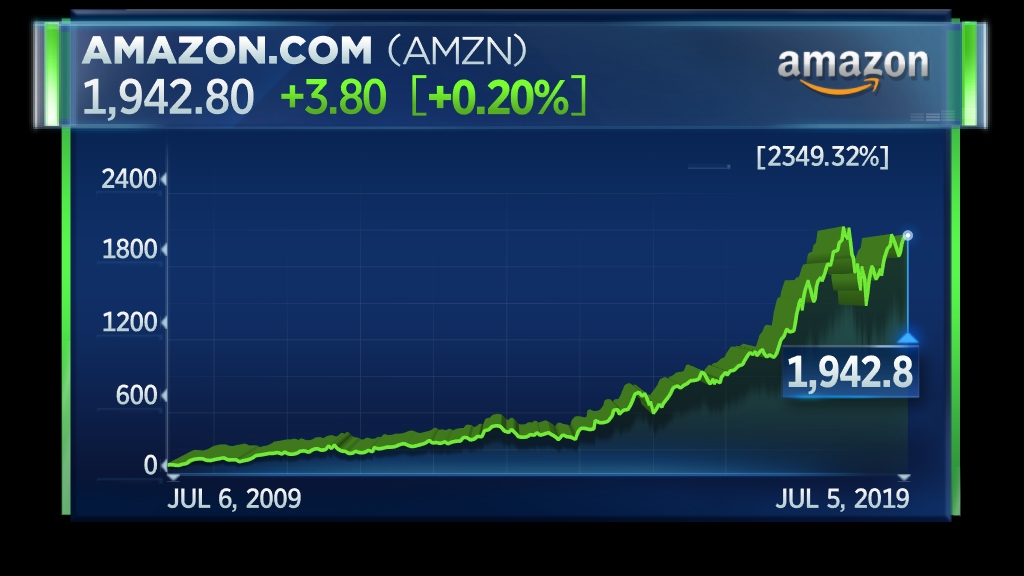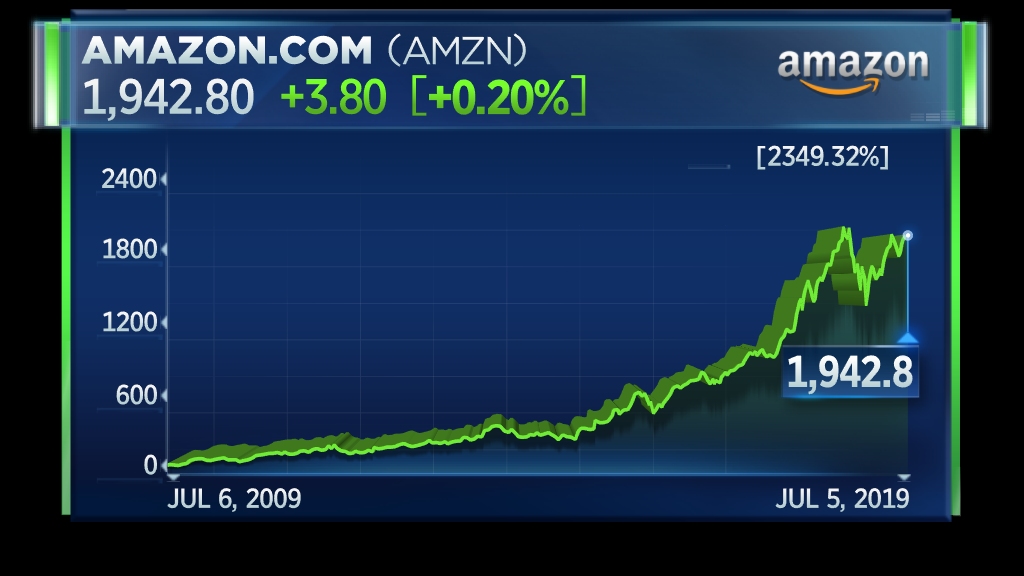Amazon turned 25 years old this week. In its quarter century of existence, it has created roughly a trillion dollars in shareholder value.
Amazon dominates e-commerce, has the biggest cloud-computing infrastructure offering and leads the market for home assistants with its Alexa technology. Additionally, it has a burgeoning online ad business and is becoming a force in Hollywood through its streaming video division. Total sales jumped 31% last year to $232.9 billion.
Tom Forte of D.A. Davidson, one of the most bullish Wall Street analysts on Amazon, said in a report Friday that the company has developed a number of strategies for others to learn from and even copy. Here’s what he laid out, along with some concrete examples.
Focus on customers, not competitors: CEO Jeff Bezos has been customer-obsessed since starting the company in 1994 as an online bookseller. According to Forte, that has been Amazon’s most important enduring quality — focusing on customers, not competition.
One recent example is its private-label business, where Amazon sees what customers want most and tries to provide it at the lowest price by creating its own branded version.
Iterate: Amazon values iteration, “making continual refinements to improve its efforts.”
Examples: The Kindle e-reader has continued to evolve to keep pace with general-purpose tablets, and the Echo has gone from a basic voice assistant to a platform for developers to provide all sorts of help for customers.
Create a flywheel: Focus on having the lowest prices, biggest selection and fastest delivery and customers will keep coming back. This customer volume attracts suppliers and other partners, which in turn increases competition in these areas — price, selection and delivery speed — which in turn draws more customers, and so on.
One recent example of this is when Amazon introduced one-day shipping for its Prime customers. Although this increases Amazon’ costs in the short run, a recent RBC survey shows that customers spend more and are more loyal when they get this perk.
Embrace change: This is a core value from Zappos, the online shoe seller Amazon acquired in 2009.
Examples: Amazon Web Services has proven adept at providing software that developers demand as technology changes, and the company has made key acquisitions in the smart home market, such as smart-doorbell maker Ring, as consumer behavior has evolved.
Losing money as a strategy: Forte calls it LmaS and says Amazon has perfected it. Investors subsidized the company for two decades, allowing it to subsist on the slimmest of margins while it continued to invest in making shopping simpler, cheaper and faster and developed other, more profitable businesses. Thanks to AWS and its ad business, Amazon is finally showing real earnings, but still far slimmer margins than other tech giants like Alphabet, Facebook, Apple and Microsoft.
“Before there was Uber, Pinterest, and, seemingly, every other newly minted IPO and also Roku, Shopify, Wayfair, there was Amazon, ” Forte wrote. “The company either was the first or, at least, the best at losing money in its first-party retail efforts to take market share. Its ability to develop other, more profitable ventures (such as third-party retail, cloud computing, and, more recently advertising) have further enhanced its ability to run its first-party retail efforts at break even (if not worse) and this is one main reason it has been so disruptive in the retail sector.”

In the report, Forte highlighted two significant areas where Amazon has fallen short: smartphones and Chinese e-commerce. The latter, he says, is Amazon’s “greatest failure and it must continue to find a strategy succeed in China no matter how many times it fails.”
He also sees four significant risks to Amazon over the next 25 years, including figuring out who will succeed Bezos, “a once-in-a-generation type founder and CEO,” and dealing with intervention from regulators and lawmakers. Forte previously highlighted those issues in a report in May.
At least in the near term, Forte clearly expects Amazon to navigate those challenges. He has a price target of $2,550, implying a 31% gain from here and $1.26 trillion market cap. Only two of the 40 analysts with price targets tracked by FactSet have higher predictions, and the average price target is $2,249.73.














Leave a comment